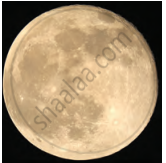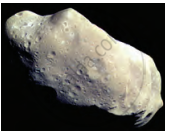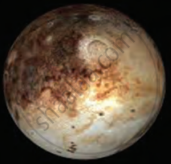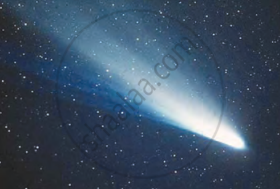Topics
Crop Production and Management
- Crop and Its Types
- The Green Revolution
- Soil Formation and Preparation for Agriculture
- Agricultural Implements
- Fertilizers
- Manuring (Biomanuring)
- Fertilizers
- Methods to Replenish Nutrients in Your Soil
- Improved methods of agriculture
- Food Security
- Weeding
- Harvesting of Crops
- Storage of Food Grains
- Animal Products used as Food
Microorganisms: Friend and Foe
Coal and Petroleum
- Conventional energy resources or non-renewable energy resources
- Carbon: A Versatile Element
- Special Features of Carbon
- Non-crystalline/Amorphous Forms: Coal
- Extraction of Coal
- Non-crystalline/Amorphous Forms: Coke
- Petroleum
- Refining of Crude Petroleum
- Natural Gas
- Some Natural Resources Are Limited
Synthetic Fibres and Plastics
- Fibre
- Fabrics
- Man-made Fibre: Synthetic Fibres
- Rayon
- Nylon
- Dacron, Terylene, Terene
- Man-made Fibre: Plastics
- Biodegradable Plastics
- Harmful Effects of Plastics
- Recycling of Plastic
Combustion and Flame
- Combustion
- Precautions and Safety Measures
- Types of Combustion
- Flame
- Fuel
- Types of Fuel
- Fuel Efficiency
Materials: Metals and Non-metals
Conservation of Plants and Animals
- Deforestation and Its Causes
- Consequences of Deforestation
- Conservation of Forest
- Conservation of Wildlife
- Biosphere Reserve
- Flora and Fauna of Forest Ecosystem
- Endemic Species
- Wildlife Sanctuary
- National Park
- Red Data Book
- Migration
- Recycling of Paper
- Reforestation
Reproduction in Animal
- Reproduction
- Reproduction
- Mode of Reproduction in Animal
- Sexual Reproduction in Animals
- The Male Reproductive System
- The Female Reproductive System
- Gametogenesis
- Fertilization in Human
- Embryonic Development in Human
- Embryo Formation in Viviparous and Oviparous Animals - Young Ones to Adults
- Asexual Reproduction in Animal
Reaching the Age of Adolescence
- Adolescence and Puberty
- Changes at Puberty
- Secondary Sex Characteristics
- Role of Hormones in Initiating Reproductive Function
- Reproductive Phase of Life in Humans
- Sex Determination
- Hormones Other than Sex Hormones
- Role of Hormones in Completing the Life History of Insects and Frogs
- Reproductive Health
- Nutritional Needs of Adolescents
- Personal Hygiene for Adolescence
Cell - Structure and Functions
- Cell: Structural and Functional Unit of Life
- The Invention of the Microscope and the Discovery of Cell
- Organisms Show Variety in Cell Number, Shape and Size
- Structure of the Cell
- Plasma Membrane
- Semi-permeable Membrane (Cell Membrane)
- Cell Wall - “Supporter and Protector”
- Nucleus - “Brain” of the Cell
- Cytoplasm - “Area of Movement”
- Plastids
- Non-living Substances Or Cell Inclusion
- Prokaryotic and Eukaryotic Cell
- Plant Cell and Animal Cell
Force and Pressure
- Force
- Force - Push or Pull
- Forces Are Due to an Interaction
- Exploring Forces
- A Force Can Change the State of Motion
- Force Can Change the Shape of an Object
- Effect of Force
- Types of Force: Contact Force
- Types of Force: Non-Contact Force
- Thrust and Pressure
- Pressure of liquid
- Factors Affecting Liquid Pressure
- Atmospheric Pressure
Friction
- Force of Friction
- Factors Affecting Friction
- Friction - A Necessary Evil
- Effects of Friction
- Increasing and Reducing Friction
- Kinds of Friction
- Fluid Friction
Sound
- Sound
- Production of Sound
- Sound and Music
- Sound Produced by Humans
- Propagation of Sound
- Sound Need a Medium to Travel
- Human Ear
- Characteristics of a Sound Wave
- Oscillator, Oscillation and Oscillatory Motion
- Properties of Sounds
- Loudness and Intensity
- Pitch (or shrillness) and frequency
- Audibility and Range
- Noise and Music
- Noise Pollution
Chemical Effects of Electric Current
- Conductor of Electricity: Liquid
- Electricity
- Chemical Effects of Electric Current
- Conductors and Insulators
Some Natural Phenomena
- Lightning and Lightning Safety
- Force of Friction
- Electric Charge
- Types of Charges and Their Interaction
- Transfer of Charges
- Electroscope
- Lightning and Lightning Safety
- Earthquake
- Protection Against Earthquakes
Light
- Light
- Reflection of Light
- Terms Used in Reflection of Light
- Law of Reflection of Light
- Types of Reflection
- Multiple Reflections
- Prism
- Dispersion of Light Through Prism and Formation of Spectrum
- Human Eye
- Care of the Eyes
- Visual Impairment and Braille System
Star and Solar System
Pollution of Air and Water
- Pollution and Its Types
- Air Pollution and Its Causes
- Case Study: The Taj Mahal
- Green House Effect
- Preventive Measures of Green House Effect
- Global Warming
- Preventive Measures of Global Warming
- Prevention of Air Pollution
- Water Pollution and Its Causes
- Case Study: Ganga Pollution and Ganga Action Plan
- Potable Water
- Purification of Water
- Prevention of Water Pollution
- Satellites
- Asteroids
- Dwarf planets
- Comet
- A meteor
Satellites:
Some heavenly bodies revolve around planets. These are called satellites. Satellites do not make their own light. They get light from the sun. Like planets, satellites rotate around their respective axes.
- The moon is the satellite of the earth. It does not have an atmosphere. Its periods of rotation and revolution are both 27.3 days.
- Except for Mercury and Venus, all other planets have satellites, but in varying numbers.

Satellite
Asteroids:
Asteroids are small space rocks that orbit the Sun, just like planets. When the solar system was forming, many small rocks and particles didn’t become planets. These are now called asteroids.
- Most asteroids are found in a region called the Asteroid Belt.
- The asteroid belt is located between the planets Mars and Jupiter.
- Asteroids are much smaller than planets and have irregular shapes (not round like planets).
- Some asteroids are only a few meters wide, while others can be hundreds of kilometres across!
- They are made of different materials like rock, metal, and sometimes ice.
- Even though there are many asteroids, they are spread out in space, so they don’t often collide with each other.

Asteroids
Dwarf Planets:
These are small celestial bodies that revolve around the sun, just like planets, but they are smaller than regular planets. Dwarf planets move around the sun on their own in a path called an orbit.
- Pluto is the most well-known dwarf planet. It takes around 248 years to complete its revolution around the sun.
- Pluto completes one rotation in about 6.38 days, which means one full day on Pluto is almost six and a half Earth days long.
- Dwarf planets are smaller than planets like Earth or Mars and don't clear their orbit of other debris, which is one reason they are not called planets.

Dwarf planet
Comets:
Comets are space objects that revolve around the sun, like planets. They are formed from frozen gases, ice, and dust particles.
- Comets are part of our solar system and move in large elliptical (oval-shaped) orbits around the sun.
- In ancient times, people thought comets brought bad events or misfortune when they appeared in the sky.
- When comets are far from the sun, they look like small points in the sky. But when they come closer to the sun, they become more visible.
- As comets get closer to the sun, the heat turns their frozen matter into gas.
- The gases from the comet are pushed away from the sun, forming a long, feathery tail that can be seen from Earth.
- Because comets have long orbits, they are only seen in the sky after a long time.
Types of comets:
- Long-period comets: These take more than 200 years to go around the sun.
- Short-period comets: These take less than 200 years to complete one orbit.
Halley's Comet:
Halley's Comet last appeared in 1986 and will return in about 76 years. It was first observed in 1910. Halley's Comet is about 16 kilometres long and 7.5 kilometres wide.

Halley’s comet
A meteor:
- Meteoroids: These are small pieces of rock or metal floating in space. They can be as small as a grain of sand or as big as a boulder.
- Meteor: When a meteoroid enters Earth's atmosphere, it moves quickly and rubs against the air. This friction causes the meteoroid to heat up and glow, creating a bright streak of light. This streak is called a meteor or shooting star. It looks like a star falling from the sky, even though it's not a star.
- Meteor fall: When you see a shooting star, it's called a meteor fall. Most of these meteors come from rocky pieces that break off from the asteroid belt, which is a region between the planets Mars and Jupiter.
- Burning in the atmosphere: Smaller meteors burn up completely before they reach the ground because the friction with the air makes them so hot that they disappear.
- Meteorites: Sometimes, a meteor does not burn up entirely and falls to the surface of the Earth. This piece of space rock is called a meteorite.
It is believed that Lonar Lake in India was formed when a large meteorite hit the Earth many years ago, creating a big crater that was filled with water. Meteors and meteorites can also fall on other planets and moons, not just on Earth.

Lonar Lake of Maharashtra
Related QuestionsVIEW ALL [27]
Match the following
| 1. | Rohini | GSLV-Mark III |
| 2. | GSAT-14 | GSLV Mark III M1 |
| 3. | GSAT-19 | SLV-3 |
| 4. | Chandrayaan-2 | PSLV-XL C25 |
| 5. | Mangalyaan | GSLV-D5 |
